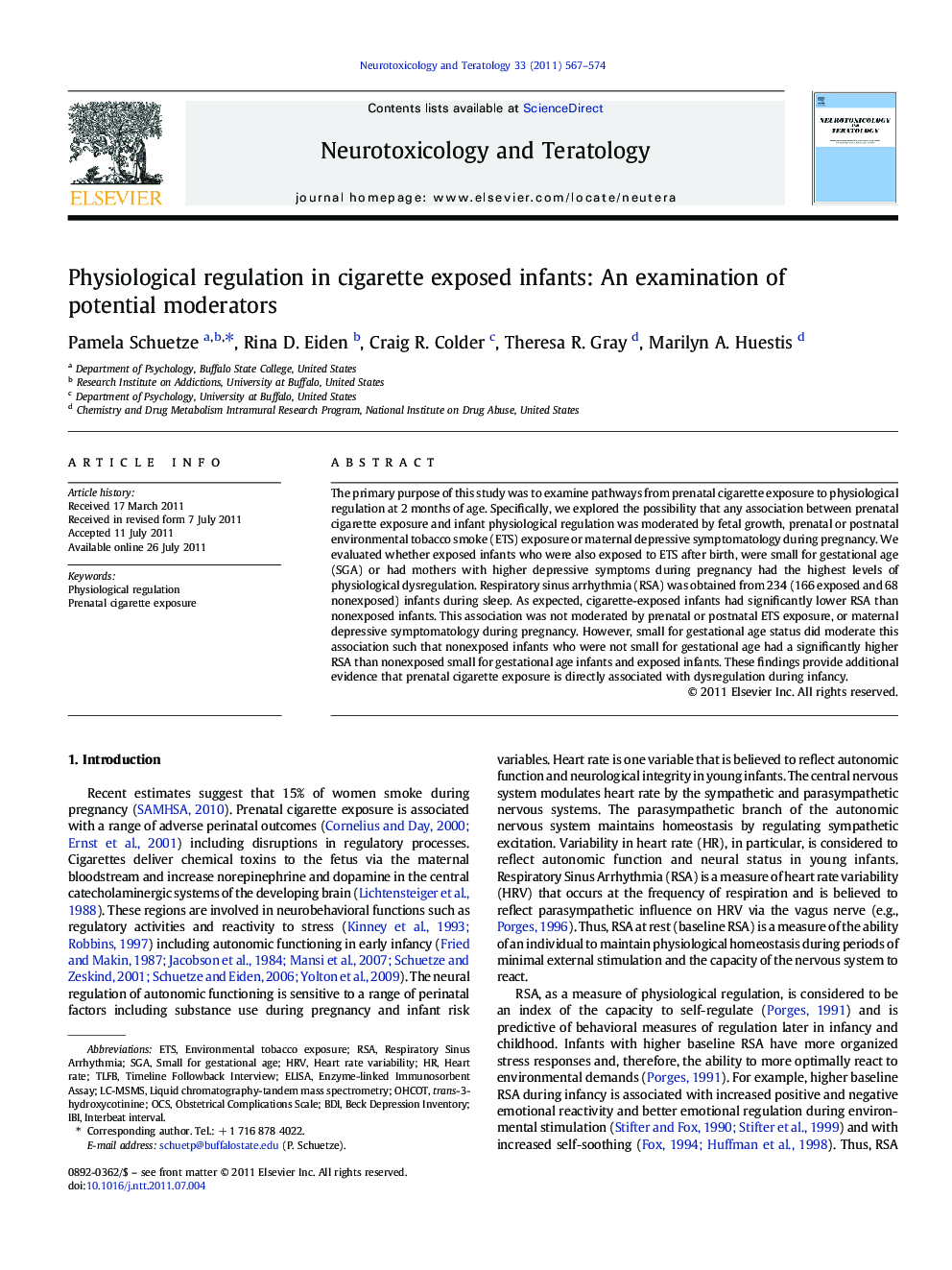| Article ID | Journal | Published Year | Pages | File Type |
|---|---|---|---|---|
| 2591534 | Neurotoxicology and Teratology | 2011 | 8 Pages |
The primary purpose of this study was to examine pathways from prenatal cigarette exposure to physiological regulation at 2 months of age. Specifically, we explored the possibility that any association between prenatal cigarette exposure and infant physiological regulation was moderated by fetal growth, prenatal or postnatal environmental tobacco smoke (ETS) exposure or maternal depressive symptomatology during pregnancy. We evaluated whether exposed infants who were also exposed to ETS after birth, were small for gestational age (SGA) or had mothers with higher depressive symptoms during pregnancy had the highest levels of physiological dysregulation. Respiratory sinus arrhythmia (RSA) was obtained from 234 (166 exposed and 68 nonexposed) infants during sleep. As expected, cigarette-exposed infants had significantly lower RSA than nonexposed infants. This association was not moderated by prenatal or postnatal ETS exposure, or maternal depressive symptomatology during pregnancy. However, small for gestational age status did moderate this association such that nonexposed infants who were not small for gestational age had a significantly higher RSA than nonexposed small for gestational age infants and exposed infants. These findings provide additional evidence that prenatal cigarette exposure is directly associated with dysregulation during infancy.
► Examined pathways from prenatal cigarertte exposure to physiological regulation. ► Obtained resting respiratory sinus arrhythmia (RSA) from 2-month old infants. ► Cigarette-exposed infants had significantly lower RSA than nonexposed infants. ► No moderation by environmental tobacco smoke exposure or maternal depression. ► Nonexposed small for gestational age and exposed infants had higher RSA.
